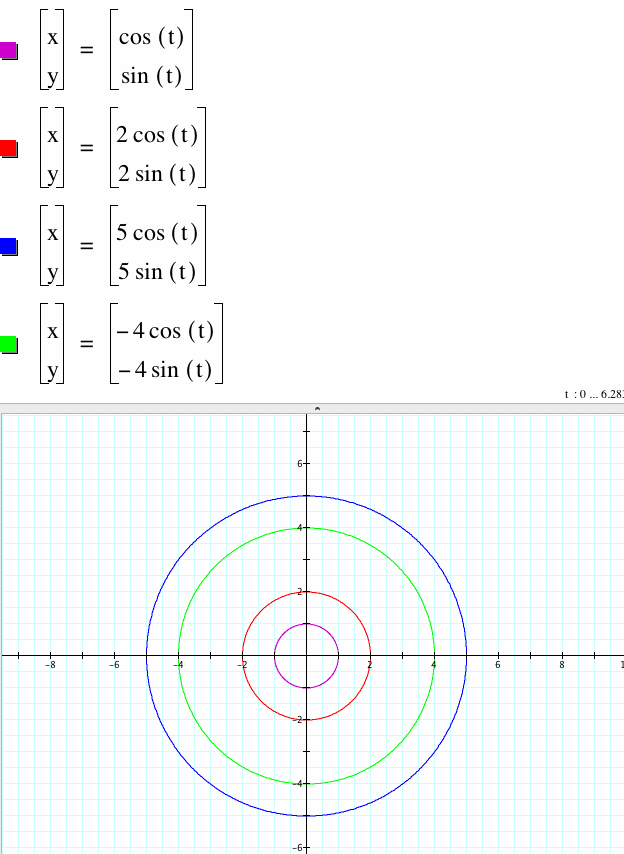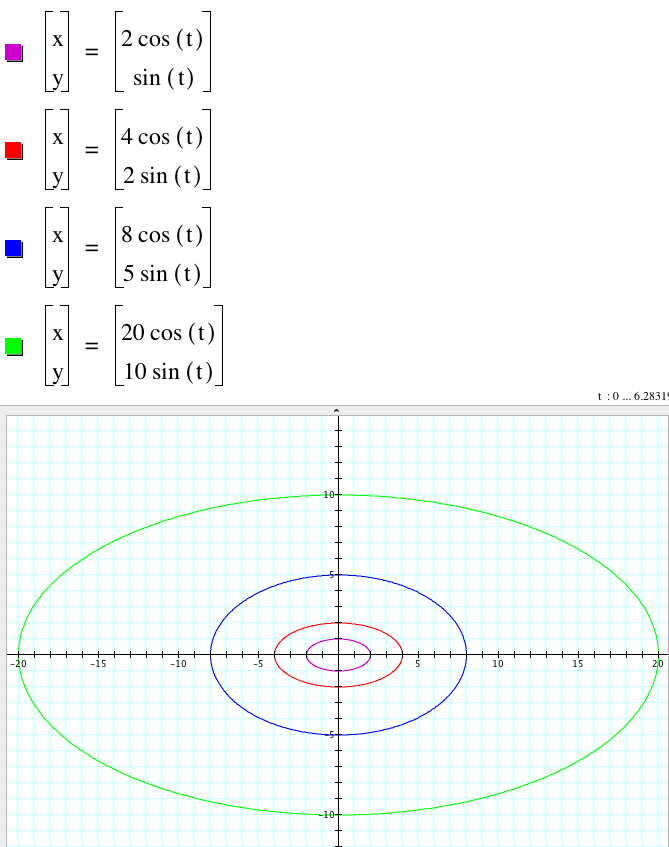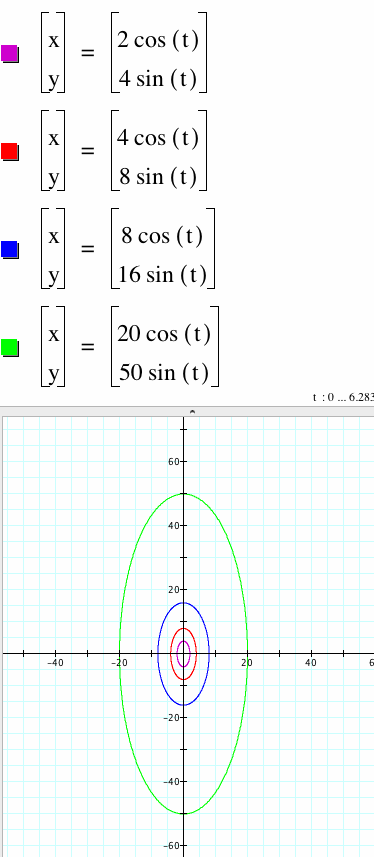

By Alicia Rosenberger
A parametric curve in the plane is a pair of functions
x = f(t)
y = g(t)
where the two continuous functions define ordered pairs (x,y). The two equations are usually called the parametric equations of a curve. The extent of the curve will depend on the range of t and your work with parametric equations should pay close attention the range of t . In many applications, we think of x and y "varying with time t " or the angle of rotation that some line makes from an initial location.
For various values of a and b, we will investigate

for ![]()
first, when a=b, we see:

when a>b, we see:

When a<b, we see:

What does this say?
We see that when a=b, our graph is circular. The circle is 2a wide and 2b tall. And our graph is centered around the origin. But when we start to change a and b, we see the graph change.
When a>b, we start to see the graph becomes an ellipse. This is because we said that 2a will represent how wide the shape is, while 2b will represent how tall the shape is. Since a is bigger than b in this case, our shape will be wider than it is tall, and hence an ellipse. For example take a look at the green ellipse, where a=20 and b=10. Notice now that the x interecepts are -20 and 20, corrseponding to the value of a.
Similarly, when a<b, we start to see the graph become a different ellipse. Since a is smaller than b in this case, the shape will be taller than wider and so we again have an ellipse. Look at the blue ellipse for example, where a=8 and b=16. We have already noted that these values stretch the graph in the y direction. Specifically, the function has y-intercepts at -16 and 16. This is because the value of sin(t) varies from -1 to 1, and since our coefficient b=16, the values now range from -16 to 16.